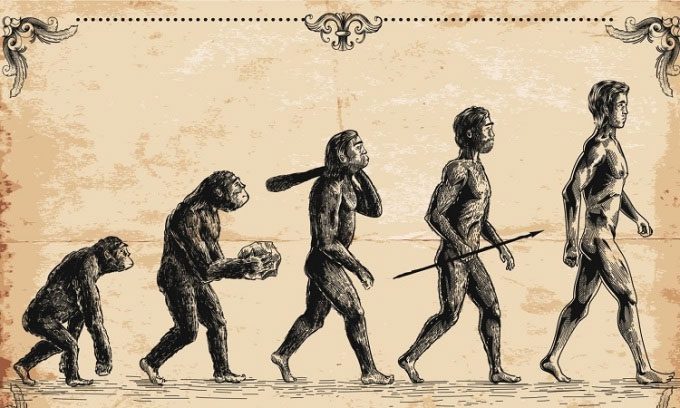If humans had tails, they might support body weight but would also cause many inconveniences when sitting or standing.
In rare cases, children born with spina bifida or abnormal sacral bones may be born with a “pseudo-tail.” This protruding appendage typically consists of muscle, connective tissue, and blood vessels but lacks bones or cartilage, according to research published in the journal Human Pathology. They are non-functional and are usually removed shortly after birth.

Humans lost their tails 25 million years ago. (Photo: Daily Beast)
Throughout human evolution, our primate ancestors possessed tails. Tails disappeared in our direct lineage approximately 25 million years ago when the human lineage diverged from monkeys. Our ancestors may have shed this appendage to conserve energy while developing better bipedal balance. However, tailed primates still exist today.
Some native monkey species in South Asia and Central Asia possess tails that can grasp objects, wrap around limbs, and support body weight, according to Field Projects International, a non-profit research and education organization. The closest living relatives with tails to humans are monkeys in Africa, Asia, and southern Europe, such as baboons and macaques, which primarily use their tails for balance. “No species has a grasping tail; that would be a regression on the evolutionary tree,” said Peter Kappeler, an evolutionary anthropologist at the University of Göttingen in Germany.
Thus, human tails would likely not be grasping. However, Kappeler notes that this does not mean the appendage would be useless. A long, bushy tail like that of a macaque could wrap around the body for warmth, similar to a wool scarf. If we evolved to hibernate in winter, the tail could serve as a fat storage system, akin to non-primate mammals like beavers.
According to Jonathan Marks, an anthropologist at the University of North Carolina at Charlotte, having a tail like other animals would alter human posture. For instance, a robust, dinosaur-like tail would tilt the human body forward from the hips, aligning our chest parallel to the ground instead of upright. A kangaroo-like tail would be challenging to manage without jumping; otherwise, it would drag on the ground. This represents a very different mode of movement, Marks emphasizes.
Marks also argues that humans would find it difficult to avoid tail injuries in daily life. A long tail could easily be stepped on or caught in doors. Meanwhile, a short tail would make it hard to sit on chairs. “Clearly, if we had tails, we would need to redesign car seats and bathrooms,” Marks remarked. The tail could also be used for wearing jewelry, but fashion would likely take a backseat to practicality.


















































